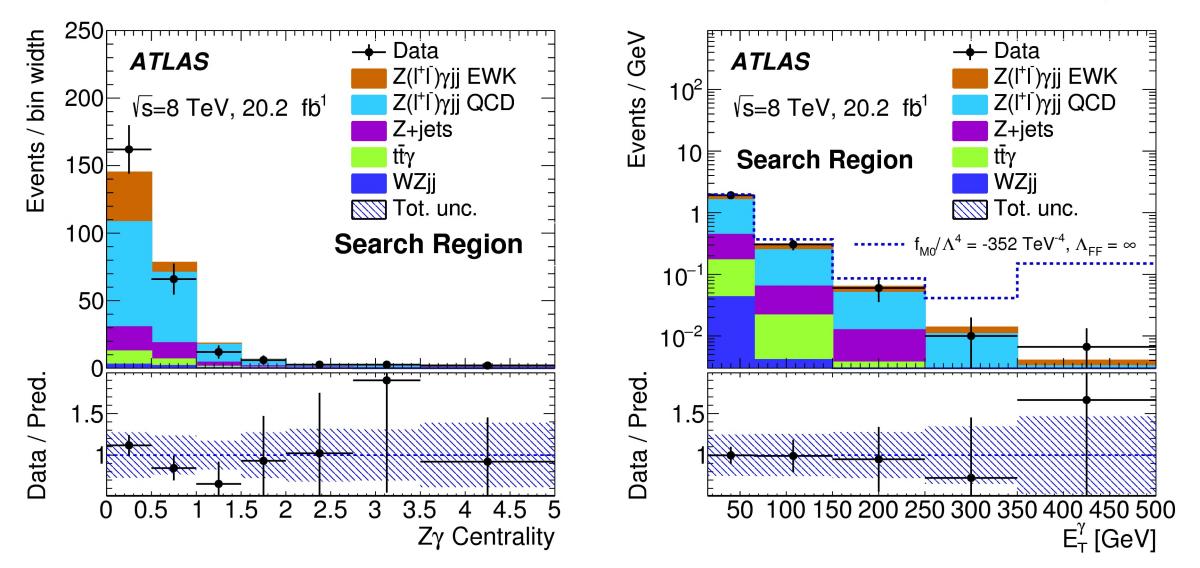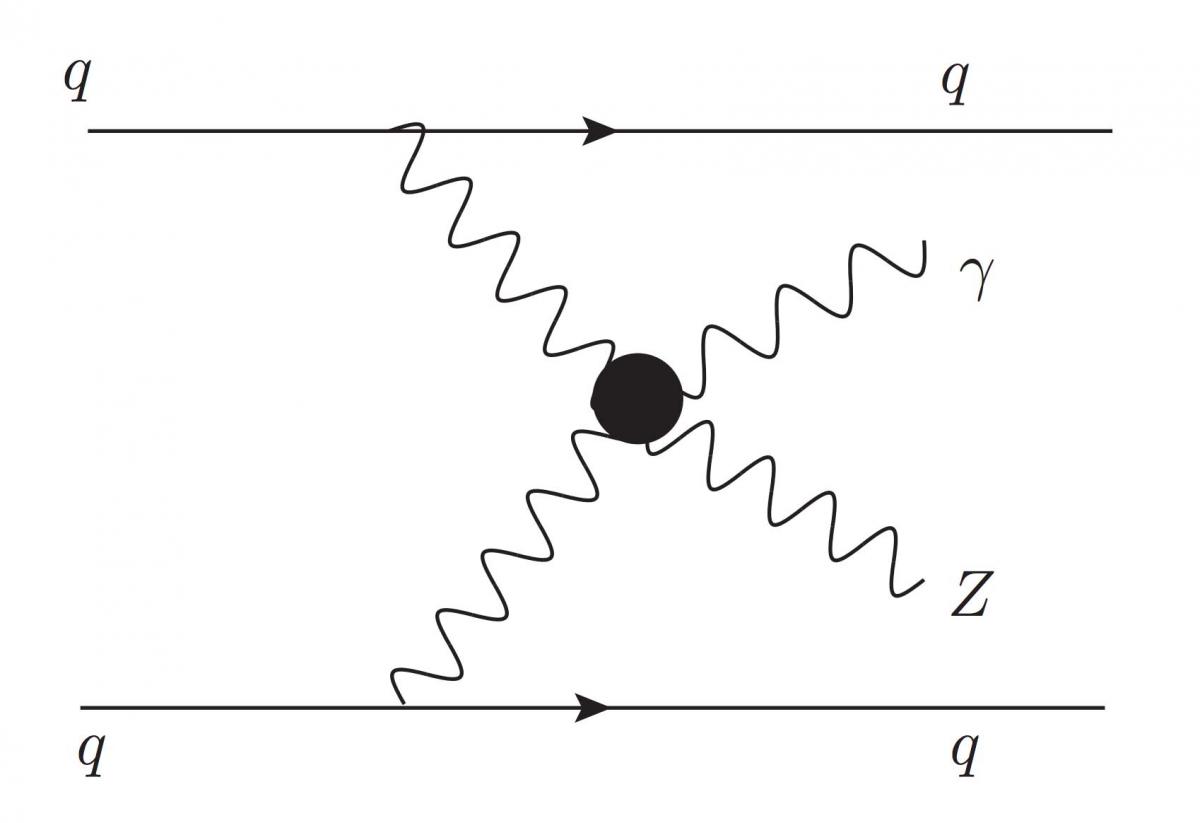New insight into the Standard Model
9 May 2017 | By

Ever since the LHC collided its first protons in 2009, the ATLAS Collaboration has been persistently studying their interactions with increasing precision. To this day, it has always observed them to be as expected by the Standard Model. Though it remains unrefuted, physicists are convinced that a better theory must exist to explain certain fundamental questions: What is the nature of the dark matter? Why is the gravitational force so weak compared to the other forces?
Answers may be found by looking at a very rare process that had previously never been studied by ATLAS: the interaction of four bosons, whose signature is the presence of a Z boson, a photon and two high-energy jets. This is an excellent probe of the electroweak sector of the Standard Model and is very sensitive to new physics models. However, this process is very difficult to detect, given its rarity and the large number of different processes that can mimic its signature (known as “background”). The main background comes from the production of a Z boson and a photon accompanied by two jets, which, unlike the electroweak process we are interested in, is produced via strong interactions.

This leads to differences in the kinematics of the observed jets, which are described in a recently-submitted paper to the Journal of High Energy Physics, where ATLAS presents a search for such events using 8 TeV data. Utilising the knowledge that the recoiling quarks (see Figure 2) will produce jets that have a very large invariant mass and are widely separated in the detector, ATLAS has been able to reduce the background and mitigate the large experimental uncertainties in order to extract the signal.
The background is suppressed by selecting events where the two jets have an invariant mass larger than 500 GeV. The signal and main background are further separated by quantifying the centrality of the Z-photon system with respect to the two jets. Events with low centrality are more likely to be produced via the electroweak signal process while those with high centrality are more likely to come from strong interactions. This is illustrated in Figure 1(a), where a small excess of events above the predicted background is observed, with a statistical significance of 2σ.
The centrality is used to measure the event rate (cross section) of the signal alone, and of the sum of the signal and the major background. Both were found to be in agreement with Standard Model predictions within the large statistical uncertainty. Anomalies on the coupling of four bosons have also been searched for, by looking at the tails of the photon transverse energy spectrum that may be enhanced by new physics contributions (blue dotted line in Figure 1(b)). No deviation from the Standard Model has been seen and stringent limits are set on the presence of new physics in this region.
The Standard Model will continue to keep its secrets… until the next set of results!
Links:
- Studies of Zγ electroweak production in association with a high-mass dijet system in proton-proton collisions at 8 TeV with the ATLAS detector (arXiv: 1705.01966, see figures)
- See also the full lists of ATLAS Conference Notes and ATLAS Physics Papers.


